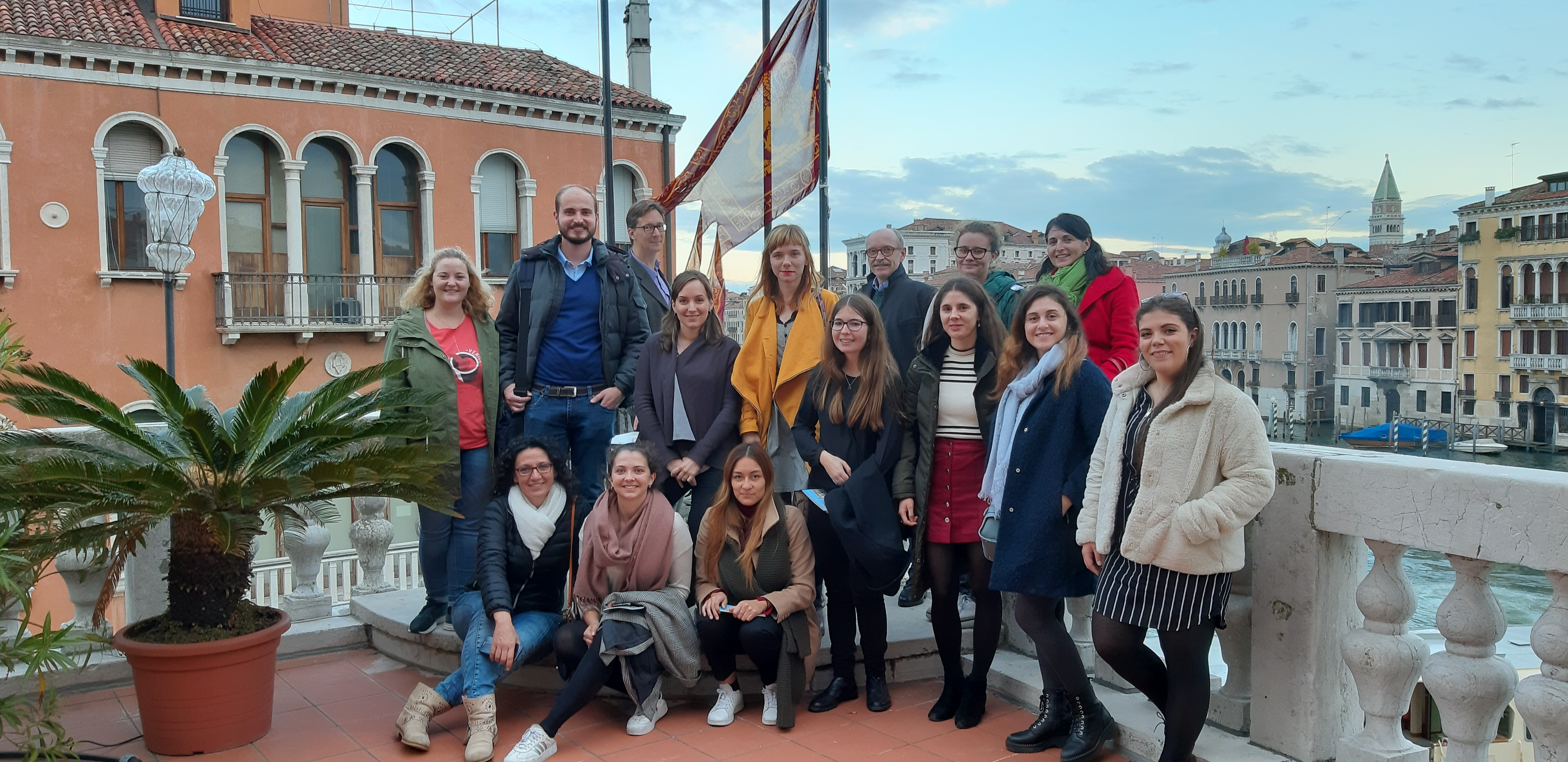
/var/www/html/dhlehre/html/wp content/uploads/2019/11/1573377729 San Servolo GruppenfotoHSVenedig 2019 11 06
During the Middle Ages and the Early Modern Period, Italian and other forms of Italo-Romance (in particular Venetian and Genoese) played a significant role as means of communication in the Mediterranean. It resulted from the commercial, military and cultural importance of different states of the Apennine peninsula and the eagerness, agility and expertise of its merchants, soldiers, diplomates, sailors, navigators, artists and others.
In our seminar, we will study the appearance and the nature of these forms of Italo-Romance in sources belonging to different genres of communication (e.g. letters, contracts, testaments, court records, chronicles, travel reports, accounting records, narrative fiction or language textbooks) from all over the Mediterranean. This should permit us to draw conclusions on their use and their status throughout the geographical space in question.
Furthermore, we will shed light on the linguistic consequences of Italian maritime activities in terms of language contact. While laying out the basic concepts of contact linguistics, we will investigate the mutual influence exerted between Italoromance and the Romance and South Slavic languages of the Adriatic, Albanian, Greek, Ottoman, Turkish and Arabic, taking also into consideration the lingua franca as the most prominent result of these different constellations of language contact.
References
Baglioni, Daniele (2006): La scripta italoromanza del regno di Cipro: edizione e commento di testi di scriventi ciprioti del Quattrocento, Rome: Aracne.
Baglioni, Daniele (2010): L’italiano delle cancellerie tunisine (1590 – 1703). Edizione e commento linguistico delle “Carte Cremona”, Rome: Scienze e Lettere.
Banfi, Emanuele (2012): “La posizione dell’italiano (e di “italiani altri”) tra le lingue d’Europa: usi, funzioni, prestigio”, in: Telmon, Tullio / Raimondi, Gianmario / Revelli, Luisa (edd.): Coesistenze linguistiche nell’Italia pre- e postunitaria. Atti del XLV congresso internazionale della Società di linguistica italiana (Aosta / Bard / Torino, 26-28 settembre 2011), 2 vols., Rome: Bulzoni, vol. II, 1-124.
Brincat, Giuseppe (2004): Malta. Una storia linguistica, Recco: Le mani.
Bruni, Francesco (2013): L’italiano fuori d’Italia, Florence: Cesati (in particular chap. 1, 4, 5 and 7).
Dotto, Diego (2008): Scriptae venezianeggianti a Ragusa nel XIV secolo: edizione e commento di testi volgari dell’Archivio di Stato di Dubrovnik, Rome: Viella.
Eufe, Rembert (2006): “Sta lengua ha un privilegio tanto grando”. Status und Gebrauch des Venezianischen in der Republik Venedig, Frankfurt am Main: Lang.
Krefeld, Thomas (2011): “‘Primäre’, ‘sekundäre’ und ‘tertiäre’ Dialekte – und die Geschichte des italienischen Sprachraums”, in: Overbeck, Anja / Schweickard, Wolfgang / Völker, Harald (edd.): Lexikon, Varietät, Phiologie. Romanistische Studien Günter Holtus zum 65. Geburtstag, Berlin / Boston: de Gruyter, 137-147.
Krefeld, Thomas (2017): ‘Italienisch’ als mediterrane Verkehrssprache (11.-18. Jh). Vorlesung dh-lehre. Version 1 (2.03.2017, 09:13). url: https://www.dh-lehre.gwi.uni-muenchen.de/?p=11202&v=1..
Minervini, Laura (1996): “La lingua franca mediterranea. Plurilinguismo, mistilinguismo, pidginizzazione sulle coste del Mediterraneo tra tardo Medioevo e prima Età Moderna”, in: Medioevo Romanzo 30,2, 231-301.
Minervini, Laura (2006): “L’italiano nell’impero ottomano”, in: Banfi, Emanuele / Iannàccaro, Gabriele (edd.): Lo spazio linguistico italiano e le “lingue esotiche”: rapporti e reciproci influssi, Atti del XXXIX congresso internazionale di studi della Società di Linguistica Italiana (Milano, 22-24 settembre 2005), Rome: Bulzoni.
Sottile, Roberto/Sacglione, Francesco (2019): La lingua franca del Mediterraneo ieri e oggi. Assetto storico-sociolinguistico, influenze italoromanze, ‘nuovi usi’, Versione 2 (21.08.2019, 15:16). In: Thomas Krefeld & Roland Bauer (2019): Lo spazio comunicativo dell’Italia e delle varietà italiane, Versione 44. In: Korpus im Text. url:http://www.kit.gwi.uni-muenchen.de/?p=37294&v=2.
Vuletić, Nicola/Dotto, Diego (2019): Il veneziano in Dalmazia e a Dubrovnik/Ragusa fino al XVIII secolo: per la storia di uno spazio comunicativo, Versione 1 (19.06.2019, 16:35). In: Thomas Krefeld & Roland Bauer (2019): Lo spazio comunicativo dell’Italia e delle varietà italiane, Versione 44. In: Korpus im Text. url: http://www.kit.gwi.uni-muenchen.de/?p=14384&v=1.
Testa, Enrico (2014): L’italiano nascosto. Una storia linguistica e culturale, Turin: Einaudi (chap. 5: L’italiano d’Oltremare, 259-272).